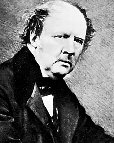History
Home
Process
Gallery
Expo
Links
Contact
And in the beginning there was light!
It is of all times, artists have tried to fix the images they observed. It is not so very long ago all images had to be manufactured by hand. Usually this was done by skilled people. At the beginning of the 19th century devices were invented to improve the detail of an image. The camera obscura an the camera lucida were so refined, with good quality lenses and mirrors, with surprisingly sharp, clear images to assist the artist with his work. Details in an image became increasingly important. Even in such a way that the ability of the artist’s capabilities weren’t enough. There was a need for a method that could “freeze” an image directly, so that nature, in a matter of speaking, could “write” itself. The big problem was finding a medium that in a moment could capture the world and then could be viewed without the image would fade away.
It is obvious that photography, or as you wish, the writing of light, not just dropped out of the sky. It was on the first quarter of the 19th century experimenting with light took place. A few successes were reported. In particular, a French artist and an English amateur scientist in 1839 came almost simultaneously with two different forms of photography. They were William Henry Fox Talbot and Louis Jacques Mande Daguèrre. The Calotype of Talbot and the Daguèrreotype of Daguèrre, were announced to the world. Although the Calotype had the advantage that multiple copies of one image could be made, it was a negative made of paper, the quality was inferior to that of the Daguèrreotype.


William H.F. Talbot
Louis J.M. Daguerre
The Daguèrreotype